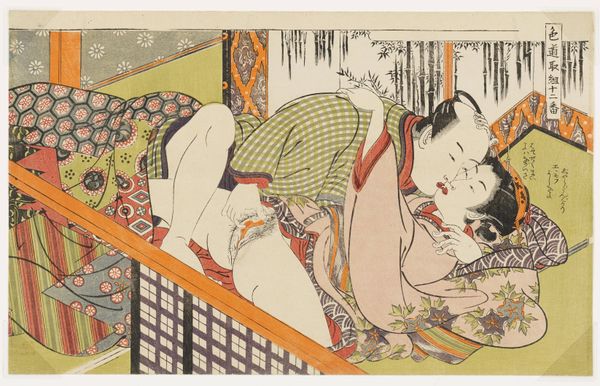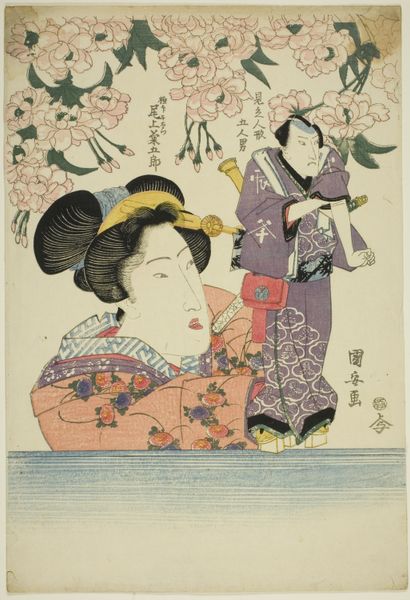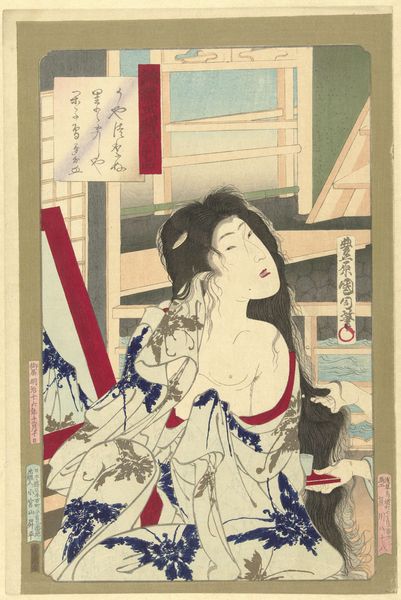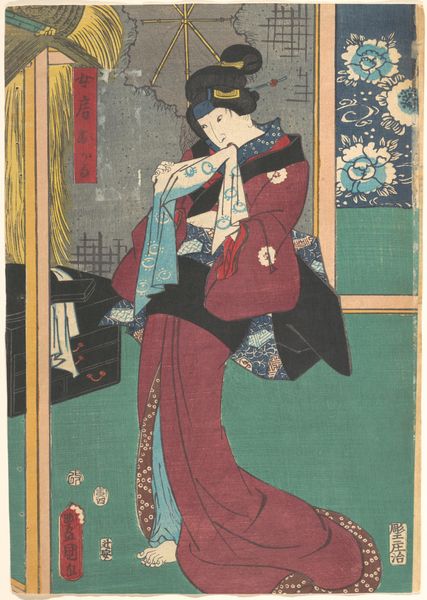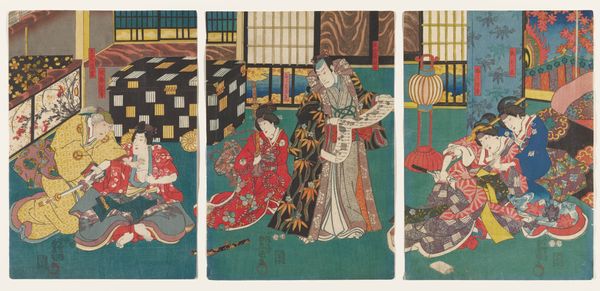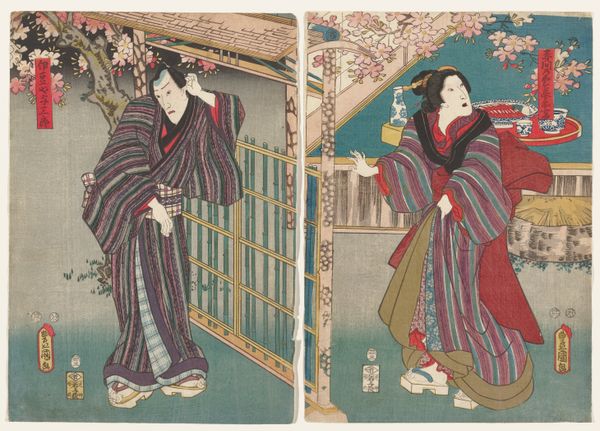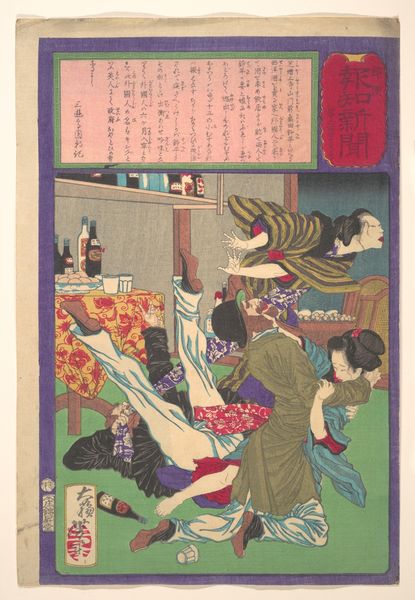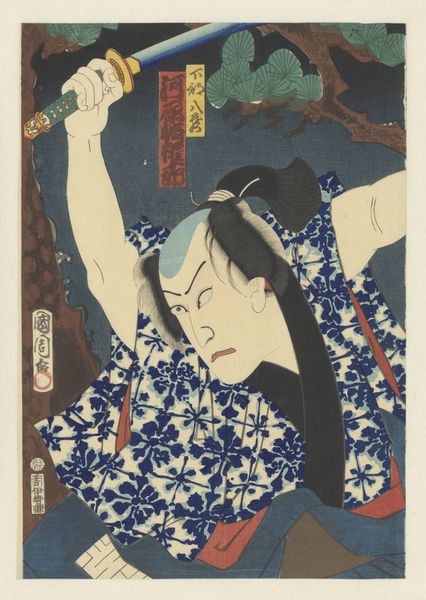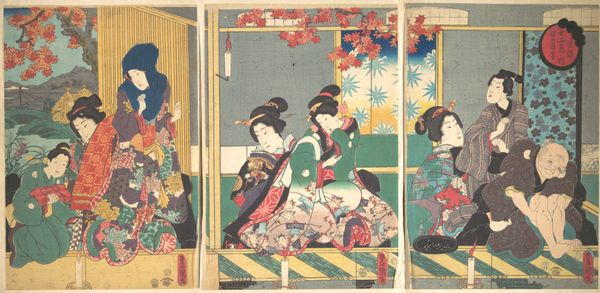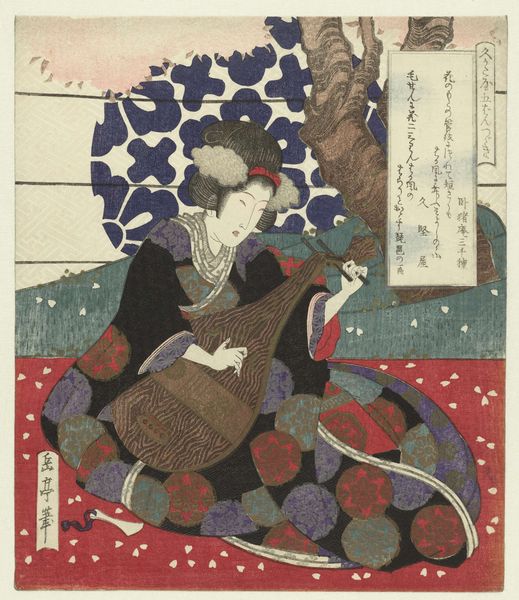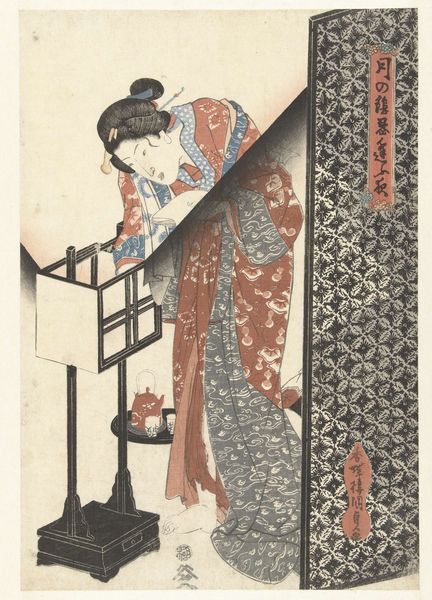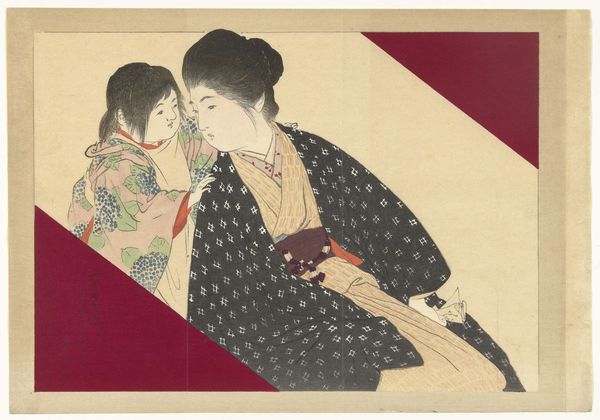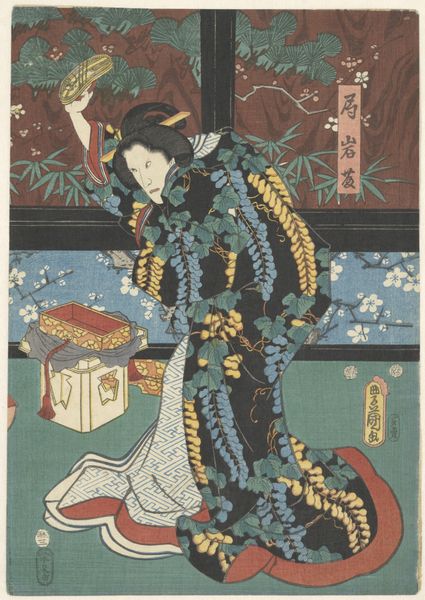
The actors Nakamura Shikan IV as Fuwa Banzaemon, Nakamura Fukusuke IV as the Maid, and Kataoka Gado III as Nagoya Sanzaburo 1885
0:00
0:00
Copyright: Public Domain
Editor: So this striking triptych, made by Toyohara Kunichika in 1885, presents actors in what looks like a tense scene. It’s a woodblock print, full of vibrant colours, yet I can't quite place the drama. What do you see in this work, particularly considering the time it was created? Curator: This triptych, "The actors Nakamura Shikan IV as Fuwa Banzaemon, Nakamura Fukusuke IV as the Maid, and Kataoka Gado III as Nagoya Sanzaburo", offers us a glimpse into the complexities of Meiji-era Japan. The actors depicted weren't merely performing; they were embodiments of cultural and societal shifts. Kunichika uses vibrant colours and a traditional Ukiyo-e style to depict a story, but think about what these figures represented to an audience grappling with modernization and Western influence. What power dynamics do you see in the depiction of the figures, particularly the "Maid"? Editor: The power dynamics... The central figure certainly seems vulnerable, almost caught between the two men brandishing swords. It's interesting to think about this in the context of Western influence—were traditional gender roles and hierarchies being challenged or reinforced? Curator: Exactly. And consider that Kabuki theatre itself was often a site of subversive social commentary. The roles actors played, their gender presentation, and the stories enacted allowed for explorations of identity and societal critique. Look closely at the patterns on the costumes, the objects they hold. Do you think these details contribute to understanding the characters’ position in society? Do you notice the lantern with lettering? Editor: The elaborate patterns and the weaponry definitely indicate a certain status, while the woman in the centre lacks those outward markers of power. I wonder if the lettering on the lanterns hints at who controls the narrative in the scene? Curator: Precisely. Kunichika doesn't just present a scene; he invites us to consider how power, gender, and tradition intersect in a rapidly changing world. Editor: That gives me a completely new perspective. It’s fascinating to see how much history is embedded in this single artwork. Curator: Absolutely, by viewing it through the lens of social and political contexts, this triptych becomes far more than just a beautiful image; it becomes a poignant reflection of a society in transition.
Comments
No comments
Be the first to comment and join the conversation on the ultimate creative platform.
